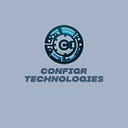Rethinking IT for SMEs: From Cost Center to Strategic Growth Engine
Small and Medium-sized Enterprises (SMEs) face unique challenges. They thrive on adaptability and resourcefulness, where every dollar counts.
One important area impacting success is how IT is perceived as a necessary cost center rather than a strategic enabler for growth and efficiency.
Let’s discuss why it’s time for SMEs to redefine the role of IT, shifting from a cost-focused mindset to an investment in business transformation.
The Traditional View of IT: A Necessary Expense
It’s common for SMEs to see IT expenses related to hardware, software, infrastructure maintenance, and support staff as inevitable costs associated with staying operational. While this outlook has a sliver of truth, focusing solely on costs leads to several limitations.
Understanding IT Costs for SMEs
Let’s break down the typical IT costs SMEs face:
- Hardware: Computing devices (desktops, laptops, servers), networking equipment, printers, etc.
- Software: Operating systems, productivity suites, specialized applications (accounting, CRM, etc.)
- Infrastructure: Internet connectivity, servers and storage (either on-site or cloud-based)
- IT Support: Internal IT staff or outsourced services for helpdesk, troubleshooting, and ongoing maintenance.
Why the ‘Cost Center’ Label Might Be Hurting Your Business
When IT is primarily seen as a cost:
- Investment reluctance: It becomes more challenging to justify IT initiatives beyond keeping the lights on.
- Missed opportunities: New technologies that could create efficiencies or revenue streams may need to be noticed.
- Reactive decision-making: Emphasis on fixing issues versus strategy, leading to potential downtime, disruption, and security vulnerabilities.
IT as a Catalyst for Growth and Innovation
The most innovative SMEs view IT as an investment that directly unlocks value for the business. It’s about leveraging technology for better outcomes rather than simply keeping things running.
Embracing Digital Transformation for Competitive Advantage
Digital transformation encompasses using technology to optimize current operations and explore new business models and revenue sources. Examples of this for SMEs include:
- E-commerce: Expanding sales channels and reach with an online store.
- Digital Marketing: Using targeted online campaigns to drive growth.
- Collaboration and Remote Work Tools: Improving team productivity and agility.
Data-Driven Decision Making with IT
IT plays a central role in gathering and analyzing business data. This data gives SMEs better insights into:
- Customer behavior: Optimizing marketing and personalizing experiences.
- Operational metrics: Spotting bottlenecks and improving overall efficiency.
- Market trends: Identifying new opportunities or adjusting to changing conditions.
The IT Advantage in Customer Experience
Strong IT systems lead to seamless customer experiences, impacting satisfaction and loyalty. For instance:
- CRM: Building lasting customer relationships via centralized data
- Omnichannel support: Providing a unified way for customers to interact with your business
- Self-service options: Reducing pressure on support staff while empowering customers to find answers quickly.
Optimizing SME IT Spend for Maximum Impact
SMEs must allocate resources in a way that gets the most out of their IT investment. Prioritizing and a considered approach make all the difference.
Cloud vs. On-Premise: What’s Right for Your SME?
One major decision is to invest in on-premise infrastructure (servers owned and managed within the company) or adopt cloud-based services. Considerations include:
Cloud:
- Pay-as-you-go models provide flexibility, often requiring less upfront capital.
- Easy scalability as business needs grow.
- Responsibility for security and ongoing maintenance shared with the cloud provider.
On-Premise:
- Greater control over hardware and security may be preferable for specific use cases or highly sensitive data.
- Typically a larger upfront investment is required.
- In-house management of system updates, security, and potential downtime.
Prioritizing Cybersecurity in a Cost-Effective Manner
SMEs are frequently targets for cyber attacks, often due to a misconception that they lack robust security. Cost-effective strategies are essential:
- Employee training: Awareness of phishing threats, strong passwords, and basic security best practices.
- Multi-layered security: Antivirus, firewalls, and regularly updated software to reduce vulnerabilities.
- Cost-effective managed security services: Consider partnering with an expert provider for a tailored security plan
- Cyber Insurance: While not a prevention tool, this financial safety net can mitigate costs related to a breach.
IT: The Unsung Hero of Streamlined Operations
An optimized IT environment contributes significantly to business agility and streamlined operations. This efficiency impacts the bottom line in a big way.
Leveraging Automation to Improve Productivity
IT helps SMEs to save time and costs by automating routine, repetitive tasks. This may include:
- Workflow automation: Reduce manual errors and speed up approvals, orders, or customer inquiries.
- Inventory management: Tracking stock levels and automating reordering to avoid costly stockouts or oversupply issues.
- Invoice and billing automation: Eliminate time-consuming manual processes and ensure quicker payments.
Additional considerations
Aside from the major themes addressed above, here are some additional points to keep in mind for SMEs approaching IT as a value center:
- Strategic Alignment: IT shouldn’t be an isolated department. Goals and processes must align with the overall business vision.
- Managed Services: Outsourced IT providers can be flexible, delivering specialized expertise for particular needs or as a complete IT department solution.
- IT Talent and Knowledge Gaps: Ongoing education and a focus on upskilling your existing staff ensures your IT expertise grows parallel to the business.
SMEs ready to make a paradigm shift will see immediate and long-term value. Ask yourself these key questions:
- Does my current IT model focus only on keeping operations running or enabling us to innovate and outpace competitors?
- Could we use better data to understand our customers and identify where to create new revenue streams?
- Given the amount of valuable business and customer data we manage, are we adequately protected from cyber threats?
If your answer to any of these is “no” or “I’m not sure,” then it’s time for a fresh approach to IT, which I believe is a key contributor to SME success.
